Singapore weather, tourist attractions and vacation tips
Travel Singapore
From the time you touch down in Singapore, you’ll notice a few things – first, take in the simply stunning Marina Bay skyline, then head out on the town for shopping, food and any number of attractions. This immaculately clean city marries nature with beautiful, innovative architecture. You can often find public parks among city lights and skyscrapers. The City in a Garden is also culturally rich, and has grown into a favourite destination for foodies and lovers of high-end fashion.
These factors have made Singapore a notoriously expensive country to visit, but don’t let sticker shock dissuade you – with our tips for when to go, where to stay and how save on essentials like flights, transportation, food and attractions, you’ll discover plenty of ways to shave costs.
Geography, population and more
Located in the continent of Asia, Singapore does not share land borders with any countries, and has a population of 5.6 million people. You might be surprised to discover the country is an economic powerhouse; it’s seaport is one of the busiest in the world and Singapore has grown to become a major worldwide banking, shipbuilding and petroleum centre.
“Within the last few decades, this melting pot of cultures has moved onto the ‘A List’ for international travelers, and is today one of the most sophisticated tourist destinations on the planet,” declares World Atlas.
Fact: Singapore is currently the only island-city-country in the world, and is slightly smaller than the city of Lexington, Kentucky in the United States.

Currency and budget
Singapore uses the Singapore Dollar (SGD) and most places will offer fair exchange rates, notes Will Fly for Food, a travel blog for the gastronomically inclined written by JB & Renée. For the best exchange rate, they recommend heading to Mustafa Foreign Exchange at Mustafa Centre in Little India, which is open 24/7. You can also check their other recommended money changers or go to an ATM. When we checked in late April 2019, the Singapore Dollar was close to par with the Canadian Dollar.
As for how much cash to take out, The Blonde Abroad says to plan on spending a minimum of $50 to $60 USD ($67 to $80 CDN) per day to cover getting around town, meal costs and inexpensive accommodations. Want to step up your accommodations or spend a little more on entertainment? Plan for $85 to $100 USD ($114 to $134 CDN) per day.
Budget your Trip, which publishes average travel costs for thousands of cities around the world provided by other travelers, was slightly more conservative, estimating average daily cost per person per day at $44 US ($59 CDN) if traveling on a cheap budget. According to the website, a couple could spend a week in The Lion City of Southeast Asia for just over $600 USD ($800+ CDN). The site also breaks down accommodation, food, entertainment and other expenses.
You can also take a look at Detourista’s Singapore trip + itinerary guide for first-timers.
ATMs
If you are going to withdraw cash from an ATM, this requires a little planning ahead – let your bank know since they may have to activate your card for overseas use. Will Fly for Food warns to never proceed “with conversion” if asked by an ATM machine – this would authorize the foreign bank to do the conversion instead of your local bank, meaning you may get a terrible exchange rate.
TripSavvy offers some great tips on how to change and use money in Singapore.

How to save
Skip the Singapore Tourist Pass
TripSavvy recommends skipping the Singapore Tourist Pass unless you absolutely love riding trains around the city. Although the pass is similar to the EZ-Link card that will save you money, you will probably not get enough value out of it to justify the cost. The Tourist Pass gets you unlimited rides over a one, two, or three-day stay and cost S$10 plus an additional S$10 that’s refunded after you return the card. This means you’d need to ride the MRT 4 to 5 times per day to break even.
If you’re more likely to spend your time seeing the sights, shopping and enjoying the entertainment, skip this one
.
Don’t commit fine-able offences
Don’t get caught on the wrong side of the law in Singapore, or you could end up in serious legal or financial trouble for seemingly innocuous offences, such as annoying someone with a musical instrument (fine: not exceeding $1,000), connecting to someone else’s wi-fi network (carries a penalty of up to 3 years in jail or a fine of $10,000), leaving a toilet unflushed ($150 fine), or others. For more details, see Unique and often misunderstood laws in Singapore by The Culture Trip.
When to go and how long to stay
The first thing to know about travel seasons in Singapore is that unlike other destinations, the country doesn’t have a definable high and low season, although you’ll want to avoid the peak travel times of November through early January, June and July, when winter travelers, holiday festivals and business traffic bring the most crowds, says hotel expert Santorini Dave. He suggests booking your trip for April, since there are no public holidays and it doesn’t fall during monsoon season.
Tip: Avoid the Northeast monsoon season, which can bring moderate to heavy rain from December through early March. Southwest monsoon season occasionally brings “Sumatra Squalls” with high winds from June through September. – Meteorological Service Singapore
Singapore Weather
If you like warm weather, Singapore is the place for you – though heat and humidity are a year-round issue in this tropical climate, it’s not as bad as, say, Thailand, where summer temps can reach 110 degrees Fahrenheit, as noted by Adventure in You.
Here, temperatures stay within a rough range of 75 to 88 degrees Fahrenheit year-round. If you’re looking to travel on a budget, avoid big holidays like the Chinese New Year, when prices may spike.

Where to stay
If you’re looking to rest on a budget, The Pinay Solo Backpacker recommends staying at hostels near MRT Stations such as Quarters Capsule Hostel and Blissful Loft, since they’re convenient for exploring and eating at hawker stalls. Book your accommodations at hostels/guesthouses in advance online and take advantage of discounts. Popular places to stay include Bugis, Chinatown, Little India, Lavender Street and Clark Quay (Riverside).
You’ll find mid-range accommodations around the north bank of Singapore River, Bras Basah Road (near Fort Canning Park) and Rochor Road. Higher end hotels are located on Marina Bay, Promenade Orchard Road and Sentosa Island.
The Broke Backpacker has a great list of recommendations for where to stay based on your budget and what you’d like to do, from experiencing Singapore’s legendary nightlife scene in Clarke Quay to combining the old with the new in Chinatown and indulging in some quality family time in Sentosa.
Passport and safety issues
Your regular Canadian passport must be valid for at least 6 months beyond the date you expect to leave Singapore. This requirement also applies if you’re traveling through Singapore to neighbouring countries. Tourist visas are not required for stays of up to 30 days, says the Government of Canada. See travel GC for more details on entry and exit requirements.
Safety
The Government of Canada advises taking normal security precautions in Singapore. Practice special health precautions to avoid becoming infected with the Zika virus. If you’re pregnant, you should avoid traveling to Singapore.

Flights and transportation
Compare flight costs and set up price alerts on sites like cheapflights.ca, Google Flights, Kayak, and Skyscanner that let you compare the cost of flights over multiple time periods.
You’ll likely fly into Changi Airport, located about 20 kilometres from Singapore’s business district. It serves as the home base for world-class Singapore Airlines and budget carriers like Tigerair and Scoot, notes Skyscanner. Travelers from Canada often book connections through American or Asian cities and fly with airlines like Cathay Pacific, Lufthansa and Air Canada.
This international gateway is one of southeast Asia’s largest transportation hubs with more than 4 terminals housing an incredible array of shops, services, theatres, gardens and more, says I am Aileen, a travel blog written by digital nomad, travel writer and vlogger Aileen Adalid. She has some great suggestions for what to do during a flight layover, breaking them down into activities inside and outside the airport.
Tip: Stay in the airport if you have 6 hours or less of Singapore layover time. – I am Aileen
Public transportation
Buses
Getting around Singapore by bus or train is easy. The country’s bus system is shared by 2 main operators both offering similar services, SBS Transit and SMRT, and takes travelers throughout the island, says Lonely Planet. You can find bus fares ranging from S$1 to S$2.10 (or for less with your EZ-Link card). Have exact change ready when you board the bus as drivers don’t offer change, or tap your EZ-Link card to the reader whenever you get on and off.
Trains
SMRT or MRT operates trains and runs a late-night bus service between the city and suburbs – jump on for a flat rate of S$4.50 per journey if you’re out between 11:30 p.m. and 4:35 a.m. on Fridays, Saturdays and the night before public holidays.
Visit Singapore highly recommends the MRT, as it’s your fastest way to get around the city and the extensive rail network will take you within walking distance of most of the country’s key attractions. If you intend to use MRT and basic bus services frequently while you’re here, buying a Singapore Tourist Pass would make sense.
Visit SBS Transit’s and SMRT’s websites for more information and route details. You can also download the SG Buses smartphone app to keep track of bus arrivals in real time.
Skip taxis; take private cars instead
Although they’re comfortable to ride in and move faster than other forms of public transport, you may want to skip flagging a taxi for other forms of public transport depending on your budget, says The Culture Trip. This is because your ride can quickly become expensive, especially when they cross gentries (ERPs), which are a form of road tax. Use them only when necessary; if you’re in a rush, not sure where your destination is located or when you can’t reach it by bus or train. Booking in advance costs more but guarantees you a ride.
A better option is to hire a private car – useful for when you’re out long past the hours when public transportation is available. Download the Grab app or the Ryde app to book one. Price changes according to time and distance.

Where to eat
Along with France and Italy, Singapore is another destination for food lovers. Whether you’re craving exotic cuisine or an authentic local meal, you can find it all here. On a budget? Drop into food halls and hawker street stalls, bustling with people and serving everything from tangy appetizers to spicy dishes, delectable desserts and everything in between, promises Travel Triangle.
Nomadic Matt suggests heading to the stalls on Smith Street particularly, as they offer food for less than S$6 and are a great place to munch on local snacks. If you’ve got a particular hankering for Chinese or Asian, you’re in luck – you can usually find it for about S$8 to S$9 per meal. He also recommends Singaporean seafood. Dining at casual restaurants will cost you around S$20. Going grocery shopping? Expect a week worth of groceries including pasta, vegetables, chicken and other basics to run you about S$75.
Tip: The Singapore Sling – the quintessential ‘Singaporean drink’ was invented here and is a must-try during your trip! Head to the iconic Raffles Hotel to savour this pretty cherry-pink cocktail. – The Culture Trip
What to do
Take a walk along Marina Bay Waterfront Promenade
Similar to San Francisco, New York and other world-class destinations, Singapore’s unforgettable waterfront offers awe-inspiring views and a way to cool off for free. The promenade’s mist will give you much-needed relief from the blazing heat, you can take a breather in breeze shelters equipped with motion sensor fans, and of course, pause to take in an incredible panorama of glitzy skyscrapers and architectural buildings. This is also a fantastic way to get a close-up view of the bay and see free outdoor performances, says TheBestSingapore.com.
Shop ’til you drop on Orchard Road
Singapore is another fashion mecca, and you’ll want to hit Orchard Road if you’re looking to shop while you’re in the country. With 22 markets and 6 commercial centres in the district, there are some excellent malls you shouldn’t miss that sell everything from affordable bargains to luxury brands. If you’re looking to snag some deals, head to 313 @ Somerset Mall, which holds international fashion stores and countless eateries. Known for its young, lively atmosphere and affordable options, 313 @ Somerset also often features live events such as fashion shows, live music and more. For more ideas, see Living Nomads’ 10 best Orchard Road Singapore shopping malls you should not miss .

Look to the stars
Looking for a unique date night idea or some quality time with your brood? Slow down and bask in the wonder of an evening spent stargazing at Science Centre Singapore, which offers free stargazing every Friday (weather permitting) between January and November from 7:45 p.m. to 10 p.m.. There’s limited space, so you’ll want to arrive by 7:30 to claim your spot, advises Nomadic Matt, who wrote a great list of 18 free and cheap things to do in Singapore. Check the Science Centre’s website for most up-to-date details.
Don’t forget to tell us about your experience! Have you ever traveled to Singapore, or are you planning to book a trip? What are your best tips when it comes to saving for vacations? We’d love to hear what you’ve planned, or any tips we’ve missed. Share your story in the comments and tell us what destinations are on your wish list. Our team love saving for holidays and we hope to inspire our members with exciting suggestions to spend your Caddle money.
How to become an amazon seller
How to become an Amazon seller
Great sales people know (and respect) their customer, have a plan to succeed and are dedicated to their product. That doesn’t change whether you’re selling your product from a storefront or on an eCommerce platform like Amazon. If your goal is to run a profitable side hustle as an Amazon seller, you’ve got your work cut out for you! Fortunately, we’ve rounded up some tips on how to grow your business and maximize your chances for success online.
About Amazon Seller Central Canada
Sellers and brands use this platform to promote their products to potential customers. When you sign up for an Amazon Seller account, you’ll be what’s known as a third-party seller. As the least expensive option Amazon offers for selling on their site, you’ll want this one if you’re looking to save cash on expenses or are just starting to sell online. Your third-party seller’s account means you:
Receive payments from existing Amazon customers through Amazon Pay.
Keep complete control of your inventory.
Only pay for advertising when a user clicks on an ad.
Can sell internationally; in Europe, etc.
Advertise your products to millions of visitors to the site.

1. Create an Amazon account
Head to Amazon services and set yourself up an Amazon seller account by clicking the Start selling button. Then click Create your Amazon account and fill in your information.
Pro tip: If you’ve already got an Amazon account, go to Your Account. On the following page, go to the box titled Other accounts and click Seller. Click the Start selling button and you’ll be taken to sellercentral.amazon.ca.
You’ll be asked to fill in:
- Your legal business name and address
- Your mobile or landline phone number
- A chargeable credit card and valid bank account
- Tax information
Click the checkbox to indicate you’ve read and accepted the terms and conditions of the Amazon Services Business Solutions Agreement. If you’re an international seller, you’ll have more reading to do; if not, click the Next button.
2. Choose products or services to sell
What do you want to sell? Will you offer products or services to your customers? It’s a good idea to do your research – see the best sellers list to get some ideas. Amazon has more than 20 product categories – everything from Books, Baby Products and Beauty to Consumer Electronics, Industrial & Scientific, Video Games, Software, and more.
Some products, such as Automotive Parts & Accessories, Sports Collectibles, Jewellery, and others require approval to sell and you’ll need to go through an application process.
As for where to find these products, Viral Launch has some great suggestions. We like Retail Arbitrage, which is less daunting for a side hustler just getting into e-commerce. Essentially, you’ll buy discounted products at retail stores like Walmart, Giant Tiger, dollar stores and others in your neighbourhood, then resell them on Amazon at a higher price. This allows you to start selling without laying out a lot of cash up front. You can also buy from online retailers, then resell on Amazon.
Both private label and wholesale selling mean getting involved with manufacturers.
Pro tip: For long-term financial success, focus on products in markets that are always strong, like weight loss, natural health, self-development, yoga, and more. – How to become a profitable Amazon Seller – The Balance Small Business

3. Decide how you’ll get orders to customers
When you sign up for your Amazon seller account, you’ll find two different ways to get orders to customers:
Fulfilment by Amazon (FBA)
<blockquote"You sell it, we ship it." is how Amazon succinctly describes this method of order fulfilment.
Using the FBA method, you send your products to Amazon fulfilment centres and keep control over your inventory. Amazon picks, packs, and ships them, in addition to providing customer service. They also handle shipping to your customer once an order is placed and takes care of any returns from the customer, which eliminates a lot of admin hassle on your end.
If you choose this option, you will pay Amazon a storage fee since they store and hold your products, as well as a small processing fee for each item sold on their site. Then you just have to worry about listing your products and awaiting those sweet, sweet sales to come in! You’ll also be eligible to list with Prime. Read up on FBA shipping rates in Canada.
Pro tip: Buyers tend to spend more money when a product is listed as a Prime product. And because some customers use the Prime only filter exclusively, they often won’t even see your product if it’s not listed as Prime. – QuickBooks
Merchant Fulfilled Shipping (Fulfilled by Merchant)
You’ll likely not want to get into fulfilling your own orders if selling on Amazon is a side hustle, since with FBA, your products are eligible for Amazon Prime’s Free Two-Day Shipping and other benefits that help keep you competitive. When you fulfill your orders, you take on the customer service, shipping and other responsibilities. This makes things much more complex, especially since Amazon demands orders be shipped in a timely manner. Learn more about Amazon Global Selling.
CPC Strategy has an in-depth guide to how to sell on Amazon in 2019, including FBA vs. FBM, fee breakdowns, and more)
4. Choose a selling plan
After you’ve decided what to sell, you’ll want to choose a selling plan. Amazon does charge you for the privilege of selling on their platform. You’ll choose between two selling plans:
Individual plan
Pay a fee of $1.49 per item sold, plus other selling fees once a product is sold. With this plan, you don’t have to set up a business account but you will need to file taxes on the items you sell (with your individual Social Insurance Number). This is the plan for you if you’re a hobby or side hustle seller.
Professional plan
As of March 2019, a first monthly subscription fee for a professional plan cost $29.99 CDN plus other selling fees, to be charged to a credit card when the user created an account. With this type of account, you can list an unlimited number of products each month. This is the plan for you if you’re selling 40-plus products a week, as a business.
You’ll enter your bank information so you can receive payments from Amazon.
After your plan payment is validated (which typically takes an hour but could take up to 24 hours, according to Amazon Seller Central), you can list products.
Fill out the application form and begin listing.
Learn about the difference between Individual and Professional plans.

5. List your items and optimize listings for search
How do you find products when you shop online? Most likely, you head straight to the Search bar to type in what you’re looking for, unless you’re in a browsing mood. Your customers will probably do the same, so make it easy for them to find your products.
An algorithm will match their keywords with the information you provide about a product. You’ll want to focus on these factors to improve your chances of appearing in a customer’s search results:
- Text match
- Price
- Availability
- Selection
- Sales history
Provide accurate, complete information can boost your visibility – and sales.
Write a listing that attracts eyeballs
Product detail page
Your Product Name, or Title, is searchable. For example, if we take a look at a product called Rachael Ray Cucina Hard Enamel Nonstick 12-Piece Cookware Set, Agave Blue is better than Blue Cookware Set. This is because the Product Name includes this specific information:
- Brand: Rachael Ray
- Packaging/Quantity: 12-Piece
- Product Type: Cookware Set
- Colour: Agave Blue
This listing includes a detailed product description, multiple product photos, a high review rating (4.3 out of 5 stars), and more than 75 customer reviews.
Under Product Information, you’ll also find a Model Number, Item Weight, Product Dimensions, Material and Product Features listed. These all go a long way to making your product stand out.
Images
High-quality images can make the difference between your customer pressing that Buy button or moving on to another seller. Here are some tips for providing effective product images:
- The image matches the product description in size, colour, etc.
- The photo is taken at a flattering angle (perhaps from many different angles)
- The entire product is depicted in the image
- The product is focused and well-lit, with no lights or shadows obscuring it
- The product occupies at least 80% of the image area.

Title
Write a concise, descriptive title that’s about 60 characters long. You only have moments to catch your customer’s eye, so make them count. Your online title on Amazon should reflect what’s on the product’s packaging.
Feedback Express has a great article on how to write winning product titles for Amazon, and one of their main points is about keywords:
Search for the products you’re selling. Which items pop up first, and what keywords do you see in the titles? How frequently do you find them in your searches? Take the most common keywords and apply them to your product title.
There’s also lots to know about formatting, such as:
- Capitalize the first letter of every main word (excluding the word ‘and’)
- Write out numbers as numerals, not words
- Spell out units of measurement
- Read the article for more details.
Search Terms
Search terms are not required fields, but Amazon does provide you with an opportunity to add them to your product to enhance discoverability. Best practices for providing search terms include:
- Don’t include product identifiers. Leave out brand names, product names, compatible product names, etc.
- Don’t provide inaccurate, misleading or irrelevant information. Your customers want to know that whatever pops up in their search results is accurate. Don’t bait and switch by categorizing your product incorrectly, using the wrong gender, out-of-context words or anything of that nature.
- Keep content concise. Respect character limits and other constraints for different fields.
- Use a single space to separate keywords. No commas, semicolons or carets needed.
Learn more about optimizing listing for search on Seller Central.

A few last points…
After you go through the logistics of setting up your account, there’s still lots to learn. Brush up on the basics and take a read through Amazon’s Seller Best Practices and the FBA resources. Here are some tips:
Provide accurate product data
This is an easy way to help your customers and avoid confusion. When you create or match to product detail pages, use unique standard identifiers (UPC/EAN/ISBN). Write clear and helpful product descriptions and condition notes. If you were buying a product online, you’d want to receive the product exactly as it was described on the detail page. Do the same for your customers.
Manage your inventory
Manage your FBA inventory on the Manage Inventory page, where you’ll find the status of all your products under the Summary tab, from Inbound (the quantity of all inbound shipments that Amazon has not received) to AFN, where a “Yes” indicates the item is listed for Fulfilment by Amazon. Search inventory by Title, Quantity in Warehouse, Price or other terms. You can also edit prices here. Learn more about managing FBA inventory.
Prepare, label and ship your inventory to Amazon fulfilment centres
Wondering how to send your inventory to Amazon? You need a shipping plan that specifies:
- the products you want to send
- the quantity of each product
- shipping method and carrier details
- whether or not you want to prep and label your inventory yourself or have Amazon do it
Then create your shipping plan using the tools in your seller account or a spreadsheet. You can also use your tools to track your shipment as it makes its way through the fulfilment network.
Wrapping up
There’s lots to know about how to become a great Amazon seller, from the ins and outs of the marketplace, the specifics of your niche, how to find products and which selling and order fulfilment plans fit you best – and that’s even before you make your first sale! But by following best practices, taking time to craft your product listing, and creating a shipping plan to send your inventory to Amazon, you’ll ensure every sale goes smoothly.
Festivals, Flights and Northern lights - what to consider on Sweden time
Travel Sweden
One of the first things you’ll notice about Sweden is that it’s a study in contrasts; you can spend days exploring the rolling countryside before venturing into Södermalm, where you’ll find vintage shops, trendy restaurants and shopping galore. Its stunning landscapes and picturesque villages offer distinct architectural wonders, and the transportation system is one of the best in the world.
While Sweden is known for being difficult to travel on a budget, we’ve tracked down some tips that’ll help you keep more kronas in your wallet, until you make it back.
Geography, population and more
Sweden is located in Northern Europe southwest of Finland and shares the Scandinavian Peninsula with Norway. Ten million people reside in one of the largest countries in Europe. The country is known for its high quality of life, beautiful cities and its love of coffee, pop music and minimalist design. The capital city of Stockholm is regarded as one of the most beautiful cities in the world.
Sweden’s vast landscape ranges from mountains and forests in the north to lowlands in the east and highlands to the west and south. While Swedish is the official language, you also might meet people who speak Finnish, Meänkieli, Sami, Romani, or Yiddish.

Currency and budget
The Swedish krona is the country’s official currency, but beware the cash-free movement; according to Culture Trip, Sweden is leading the cash-free movement, with many Swedes eschewing notes and coins for cards, citing security, convenience and speed.
You’ll find many cafes, restaurants, attractions and even public toilets do not accept cash. Instead, many are looking to apps like Swish, which lets you pay people or businesses with only their phone number or unique business code. You’ll have the ability to split bills, borrow money or share a tab.
As for how many kronas you should bring with you, Budget Your Trip, which provides average travel costs for thousands of cities all over the world as submitted by other travelers, gives cost breakdowns for everything from food and accommodation to local transportation and entertainment for both budget and mid-range trips. At the budget level, expect to spend about 472 SEK per person per day (about $66 CAD) and 1,167 per person per day ($165 CAD) for a mid-range trip.
Plan your visit for August or September
Late August and September are most affordable, because flights and hotels are cheapest during off season. WorldTrips advises signing up for alerts on travel deals sites like Expedia so you can keep an eye on prices and get the best deal.
Tip: You’ll feel the warmest temps from June through August. The stunning Midnight Sun reveals itself from May to July, while the unforgettable Northern Lights colour the sky from September through March.

Book an Airbnb or bunk at a hostel
Similar to other destinations, Airbnb, Couchsurfing and HostelWorld are favourites here. While Airbnbs often come with a kitchen (allowing you to save money by shopping at the market and eating in), you can save even more money and enjoy a more authentic experience by using Couchsurfing to connect with locals renting space in their homes.
WorldTrips says an average dorm bed at a hostel will cost you between 220 and 450 SEK (about $30 to $64 CAD) per night. Again, many offer a free breakfast, fully functional kitchen, and are a few minutes walk from downtown. Airbnb rates vary dramatically depending on location and amenities, but expect to pay at least 209 SEK (about $30 CAD).
Passport and safety issues
Because Sweden is a Schengen country, Canadian citizens don’t need a visa to travel here, but watch how long you stay; visa-free travel only applies to stays of up to 90 days in any 180-day period (this information can change any time, so always check with Canada’s foreign diplomatic missions and consulates).
If you’re using a regular Canadian passport, it must be valid for at least three months beyond the date you expect to leave the Schengen area. Learn more about passports, visas travel advice and advisories for any country at travel.gc.
Safety
The Government of Canada cautions Canadians to watch out for petty crimes like pickpocketing and purse snatching in urban areas during the summer months. These areas include:
- Stockholm’s Old Town
- The Central Station
- Restaurants
- On public transportation
Always secure your personal belongings, passport and other travel documents. The Government also says gang and organized crime-related violence happens in the three largest cities, including Stockholm, Gothenburg and Malmö. Fortunately, these have not typically happened in tourist areas, but always be vigilant.
Similar to many international destinations, terrorism is also a threat and targets could include public areas, tourist attractions, restaurants, shopping centres, airports and other transportation hubs. Always stay aware of your surroundings and watch for warnings on the Government of Sweden’s public alert system.

Get deals on budget airlines
When it comes to transportation in and around Sweden, you’re in luck; the country has several large and small airports, and a famously robust transportation hub.
Flights and airports
Flying into Sweden, you’re likely to land in one of the larger airports:
- Stockholm-Arlanda Airport
- Göteborg Landvetter Airport
- Stockholm-Skavsta Airport
- Stockholm-Bromma Airport
- Malmö Airport
- Luleå Airport
- Umeå Airport
Budget airlines are on the rise, so it’s easier to reduce the cost of what’s traditionally one of your largest travel expenses. Travel website Matador Network suggests looking into Ryanair, Easyjet and WOW Air to fly into smaller Swedish airports at cheap prices; Copenhagen’s Kastrup airport is a half-hour train ride from Malmö, the country’s third-largest city. Check baggage weight limits to avoid extra fees.
Sign up for alerts on price aggregators like Skyscanner and Google Flights to find the best times to buy.
Take the train or bus
Good news: Sweden boasts extensive rail and bus networks to help you get around the country easily.
One of the first things you’ll want to do is purchase an Interrail (for European residents) or Eurail pass (for non-European residents). The SJ trainline service releases tickets in March, June, September/October and December. Watch during these times and you’ll likely be able to nab some cheap fares if you book far enough in advance (or want to chance trying to get a last-minute ticket), says The Local Sweden.
Looking to take a short trip? Hop on a Swebus, the country’s largest express bus travel provider. Similar to the train, you’ll want to book online in advance and avoid traveling Fridays and Sundays – the busiest travel days. You’ll also find tickets at Swebus stores and retailers like 7-Eleven, says Smarter Travel. If you’re traveling afar, Eurolines connects Sweden with 25 other countries.
Visit ResRobot.se to look at bus routes and download a handy smartphone app.
Tip: In Stockholm, you can get an SL 24-hour access card for 125 SEK (less if you’re under 20), which lets you travel anywhere in the county on the commuter train, bus or metro. – The Local Sweden.
The major cities of Stockholm, Gothenburg and Malmö are all walkable, too.
Bonus: You might try a ferry if you’re visiting Gotland (Sweden’s largest island). Many ferry companies, including Tallink Silja and Viking, offer passenger travel routes from Stockholm to other countries in the Baltic Sea. Smarter Travel points out that one-way ticket prices are often cheaper than round trips.

Eat street-side, shop at food markets
The key to eating on a budget in Sweden is knowing where to go, since prices can vary significantly, points out As We Travel, which suggests looking for restaurants out of the main city centres of Stockholm, Gothenburg or Malmö.
Looking for a taste of Swedish culture? Check out a gatukök (street kitchen). Essentially, these are small street side hot dog huts that serve cheap fast food – think Swedish meatballs, the “halv special” sausage, and more.
Routes North, an independent travel guide covering Sweden, Denmark and Norway, dropped an ingenious tip to eat for cheap: Check out any of the restaurants that run cheap lunch deals to attract business types. Menus are similar to their evening fare, so it’s a low-risk chance to try that delicious Swedish dish you’ve been eyeing.
You can also meet a few locals during “afterwork” hours, held at bars and restaurants in most larger towns. Simply get yourself a beer or glass of wine, and dine on a sizeable buffet for free. Although you’ll get a tiny plate, you can always go back for more.
Of course, you can always meet locals, experience a country’s authentic culture and find some of the best food at a local food market. TripSavvy mentions Östermalms Saluhall food market as one of the best. Expect to see everything from butchers, cheesemongers, bakers to cafes and sandwich shops in one mouth-watering, tightly packed space.
Tip: Picking up a bottle of wine to open with dinner? Your only legal option in Sweden is Systembolaget, one of about 400 state-run liquor stores where you can buy stronger alcohol. You can still purchase alcoholic drinks in restaurants and bars. – Sweden.se.
Celebrate, stroll the city and explore nature
From the busy city centre of Stockholm to the tranquility of Sweden’s national parks and awe-inspiring views of the Northern Lights, there’s much to see all over the country. Here are just some unforgettable sites and experiences.

Discover Stockholm
Sweden’s capital city is a study in contrasts, from its historic old town to its young districts, captivating city centre, museums and cultural hot spots. Among favourites are Gamla Stan, one of Europe’s medieval centres. Prepare to be stunned by gabled shops and warehouses, award-winning restaurants, museums, cafes and cobblestone lanes.
Tip: You’ll want to get yourself a Stockholm Pass, which gives you free entry to over 60 attractions and use of the hop-on hop-off bus and boat tours.
The Crazy Tourist has a great list of the 25 best things to do in Stockholm.
Check out free sites
Some of the most interesting sites in Sweden are free, from free exhibits and museums to botanical gardens and parks. Matador Network suggests a self-guided walking tour or free guided walking tour to catch any sites you may have missed in your travels.
Experience festivals and celebrations
Hoping to learn more about Sweden? Visit one of the country’s many festivals, from Valborg (where you’ll enjoy dancing and socializing around a huge bonfire) in April to Midsummer – a famous Swedish celebration – in June and medieval week on the island of Gotland, there’s something for everyone. There are even crayfish parties, where locals eat crayfish, drink schnapps and wear silly hats. Learn more over on Swedish Nomad.
Take in Liseberg
Whether you’ve got the kids with you or are looking for a more romantic outing, head to Liseberg, where you’ll find one of Europe’s leading amusement parks, entertainment options like The Liseberg Theatre (Lisebergsteatern). There are also gardens, a sculpture park and in the winter, an Icebar, says Visit Sweden.
Visiting between Mid-November and December 23? You can stroll among Liseberg’s 5 million famous Christmas fairy lights and visit the huge annual Christmas market if you visit in December.

Explore Sweden’s national parks
Once you’ve got your fill of Sweden’s city life, you might be looking for an escape to nature. Sweden’s national parks have you covered, from the peaceful Muddus (said to be the quietest place in all of Sweden) with a waterfall and marshland to the Baltic seascape in Skuleskogen and the snow-capped mountains and incredible wildlife at Abisko, the most visited national park in the country.
Start planning your hiking trip – see Touropia’s list of the 10 most beautiful national parks in Sweden.
Catch the aurora borealis (Northern Lights)
Seeing the Northern Lights is an awe-inspiring experience that’s sure to be a highlight of your trip if you’re traveling between December and March (when you’re most likely to see them due to there being more darkness than light). You’ll want to head to the region of Lapland, and don’t hesitate to pack extra layers to keep warm in the frigid cold, batteries and of course, your camera.
Space Tourism Guide has a comprehensive guide to the Northern Lights in Sweden.
From Sweden’s famous architecture and museums to the bustling city of Liseberg and the tranquility of its national parks, this country has a lot to offer travellers, whether you’re honeymooning, bringing your brood or crossing the globe with friends. While Sweden is well-known for being costly to travel, there are also many free sites, exhibits and wonders to see if you’re willing to compromise on when you go, cook a few meals yourself and take advantage of the country’s robust public transportation system.
Don’t forget to tell us about your experience! Have you ever traveled to Sweden, or are you planning to book a trip? What are your best tips when it comes to saving for vacations? We’d love to hear what you’ve planned, or any tips we’ve missed. Share your story in the comments and tell us what destinations are on your wish list. Our team love saving for holidays and we hope to inspire our members with exciting suggestions to spend your Caddle money.
eBay selling tips to get you started today
How to sell on eBay for beginners
Now that 2019 is officially here, are you thinking of cleaning house to get rid of all that clutter that’s made its way into your life these past few years? No need to dread sifting through your old stuff and stressing about where to send all your perfectly good but unwanted items. In fact, you could even make yourself some extra cash by selling them on eBay!
Whether you’re looking to sell clothes, handmade accessories, household items or something else, we’ll take you through every step to help you get started.

What you need to become an eBay seller
Getting started is relatively easy. Unlike running your own e-commerce store, you don’t need online selling or design skills, and you don’t need to deal with setting up a website of your own. You do need a passion for and curiosity about selling, a willingness to learn and the ability to put some proven tips from fellow part-time and pro sellers into practice.
Before you can list your items, you’ll have to fulfill a few requirements. You’ll need to:
- Provide eBay with a valid credit card.
- Specify how you’d like to pay your seller fees.
- Choose the payment methods you’ll accept (most likely PayPal…more on this below).
- Make your Feedback Profile public.
eBay also recommends that you become PayPal verified.
But first, a few things:
Learn how the search function works
To understand how your customers will find you, you need to become a customer. So type eBay into Google and ensure you’re on your country’s site (Canadians: You can head straight to ebay.ca).
Browse the site
Type the general name of an item you’d like to purchase into the Search bar (for example: “Children’s dining set” or choose from the categories listed under the search bar. Notice how your eye is drawn to the listings with the most descriptive titles and clear, well-lit photos.
- Note other characteristics that attract you to some listings over others – you’ll use this info when you write your own listings.
- Look for the Top-rated seller badge for a good indication of which sellers provide the best buying experiences to their customers – you can achieve this whether you sell a small or large volume of items.
- Which listings appear at the top of your search results? Which receive the most bids?

Create an eBay account
Go to the top left hand corner on the main page and click the link to register.
- Type in your name and a valid email address, and create a strong password (it must have at least six characters, a number of symbol and at least one letter). Click Register.
- You’ll be asked to choose a username.
- eBay will send an email to the address you’ve provided. Follow the instructions in the email to confirm your new account.
Set up a personal account if you’re selling your old stuff or buying things for personal use. If you’re using eBay for business and your business is legally registered, create a business account. The difference lies in whether you’re selling items you’ve purchased or made strictly for the purpose of selling.
ChannelReply has an informative post about the pros and cons of an eBay business account.
Tip: Make sure your eBay account is in good standing – you won’t be able to sell if it’s been suspended. Here’s what you can do if that happens.
Choose a username
eBay can automatically provide you with a name, or you can create a custom name. Make the effort to choose an appealing custom username – it can increase your chances of selling in a competitive space. Avoid anything offensive and follow eBay’s policy for usernames:
- Valid usernames must be at least six characters in length. Your username can only include letters, numbers, periods, asterisks, underscores or dashes. As you type in a possible username, eBay provides suggestions of what’s available.
- Check that your first choice for a username is available. If it’s not, try another one.
- You can use either your email address or your username to sign into eBay. If you choose your own username, pick one that you like and will remember. Since other members will see it, eBay recommends not to include your real name or other personal information.
Learn more about characters and elements to avoid in your username.
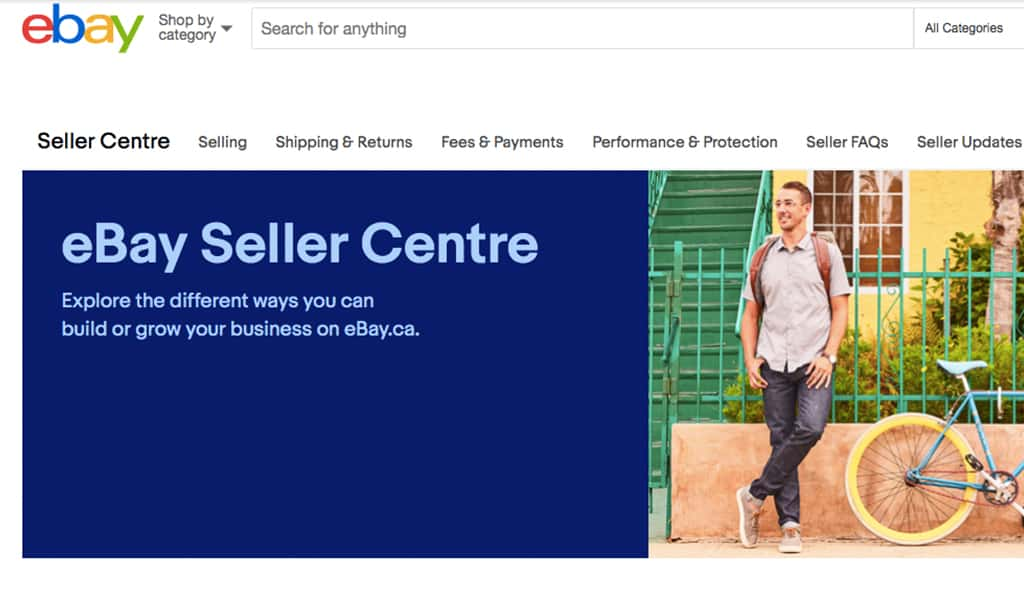
Understand policies
eBay is tightly governed by dozens of rules and policies designed to maintain the integrity of the buying and selling process. If you break one of these rules, you could find yourself in the unenviable position of being suspended. The Balance – Small Business has an excellent, comprehensive eBay Rules Survival Guide for Beginners that explains how to avoid that.
Essentially:
- Follow your contract.
- Don’t sell dangerous or restricted items (Rule of thumb: If you couldn’t sell it in a retail store and by mail in a publication, assume you can’t sell it on eBay).
- Don’t sell to yourself or bid on your own auctions.
- Follow the law (Don’t harass or threaten people you do business with, accuse them publicly, or publish or resell their personal information without their consent).
- Don’t try to minimize or avoid paying your eBay selling fees.
- Don’t use eBay to drum up non-eBay online business.
- Provide accurate contact information in your profile and serve your customers well (You can be suspended for getting too much negative feedback).
- Pay your bills (auction listing fees).
There are also rules for buyers – read the article to learn about them.
It’s also a good idea to read up on eBay’s seller information to learn more in-depth about selling, shipping & returns, fees and payments and performance and protection policies.
Fill in your profile page
When you’re checking out a new local business online or are considering hiring someone to do a quick job around the house, what do you look for? You probably look them up to see if they have a basic website with a picture of themselves and at least a small profile or description that gives you a sense of who they are.
That’s what buyers will be looking for from you so they can see you’re a legitimate seller.
Your profile includes:
- Basic information like your user ID and recent feedback
- A link to any items you have for sale.
- Photos, if you choose to add them. Your cover photo should be 1200 pixels wide by 270 pixels tall, and up to 4 MB in size. (See eBay’s tips on how to add photos.)
- A description about yourself, your interests and the things you enjoy buying or selling. As you get more experienced and potentially decide to sell new products, you can add credentials such as knowledge and expertise on certain products.
Share your profile link or find other members’ profiles using eBay’s profile URL: www.ebay.com/usr/<User ID. For example if your user ID were johndean2, your profile would be www.ebay.com/usr/johndean2.

Register a PayPal account
eBay recommends you set up a free PayPal account (it’s the preferred payment method for most buyers and sellers).
PayPal links directly to your bank account or credit card. When one of your items is purchased, you’ll receive the payment in your PayPal account, which you can then transfer to your bank account. If you choose to link your account to your credit card, the funds can be instantly transferred to your bank and the balance shows up on your account right away.
Once you set up your PayPal account, follow these steps to link it your eBay account so you can easily accept payments for items (it takes about a minute):
- Click My eBay at the top of most eBay pages.
- Click the Account tab.
- Click the “PayPal Account” link on the left side of the page.
- Click the Link My PayPal Account button.
- Log into PayPal to finish linking your accounts
Buy a few small items
As an eBay newbie, you want to establish your credibility and reputation as a member of the eBay community. You can do this by buying a few small items (Bonus: This gives you the opportunity to see things from the buyer’s point of view). Pay for the items right away and leave positive feedback if you can to develop your presence and get yourself a good buyer rating – this will bode well for you when buyers look at your profile and listed products.
Decide which items you’ll sell
Do you have a pair of good quality shoes that are never worn because they just don’t look or feel as good as they did in the store? Maybe you’ve got a perfectly good computer hard drive, a coffee table taking up space in the basement, or some video games sitting in an old box.
Believe it or not, there’s probably someone looking for at least some of the things taking up space in your house. Why not clear the clutter and make yourself some cash while you’re at it? CrazyLister has a great list of ideas for items to sell and some tips to start you off.
In a nutshell, here are CrazyLister’s factors to consider about the products you want to sell:
Price
Target the $150 to $300 (USD) range so you can make a good profit margin but avoid too much risk.
Weight
The lighter the item, the lower costs to ship it express. Plus, if a buyer wants to return an item, you’re not saddled with as heavy a cost burden if you stick to light items.
Market
Don’t compete with experienced sellers in niche markets.
Simplicity
The easier the product is to use and assemble, the more satisfied your buyers will probably be.
Expertise
Do you have expert knowledge on a specific product, such as technical items or electronic devices? You’ve got a huge market advantage!
Tip: Avoid selling expensive items until you gain experience – scammers look for newbies to scam for high-priced goods. – The Balance – Small Business

List your items
Research
Do a little detective work before you start writing your listings to search for items similar to the ones you’d like to sell. What do the most popular listings (completed sales and current listings that have attracted a lot of bids) have in common?
- Notice how sellers introduce themselves and build their credibility.
- If the photos and descriptions are attractive to you as a buyer, consider why, and replicate this in your own listing.
Take high-quality photos
Photos are critical to selling your product – they accurately depict what words can’t, build trust with the buyer and give them an idea of what your item looks like so they can imagine already owning it before they’ve even purchased.
You’ll want to shoot as many angles as possible, use natural lighting (and potentially some other light sources if required), and minimize distractions so the buyer’s focus is on your shot and not a messy background. Also, don’t be afraid to show off the craftsmanship of your product by focusing at close range and experimenting with depth of field.
Finally, spring for some good photo software to edit your captures and size them appropriately. Tom’s Guide has some in-depth tips on how to take product photos that sell.
Write a listing that attracts eyeballs
Title
Write a concise, descriptive title so your item will pop up in more searches. You’ve got 80 characters, so make them count. Andrew Minalto has some excellent advice on how to write the perfect eBay listing title:
- State exactly what your item is, even if your title repeats the category name.
- Include the item’s brand name, artist, or designer.
- Include specifics, such as size, colour and condition.
- Capitalize the first letter on most words to make your title easily readable.
- Use correct spelling, (not all caps), but don’t worry about creating a grammatically correct sentence.
These are just a few of his tips – read the article for more info.
Description
If you’ve got some writing skills, here’s the place to show them off. In ChannelReply’s 6 tips on how to write an eBay description that sells, they advise following the well-known best practice in advertising of talking benefits before features:
“Always start with the benefits – the sizzle. Talk about the thrill of taking your kayak down white-water rapids rather than just saying it’s made of durable plastic. Hook parents with memories of when they played with the classic toys you sell rather than launching into how they don’t pose a choking hazard or no longer contain lead paint.”
Listing formats
Choose between two listing formats: Auction style or fixed price.
Auction style listings
List your item for 1 to 10 days and set a starting price – typically the lowest price you’re willing to accept. Interested buyers bid on your item, driving the price higher until the listing ends. The highest bidder wins the item.
Fixed price listings
List your item at a set price for 3 to 10 days, 30 days, or Good ‘Til Cancelled (which renew automatically until all items sell, you end the listing, or eBay ends the listing). The fixed price listing allows buyers to purchase right away without bidding.
eBay generally recommends fixed price listings for business sellers, unless the value of the item is unclear (which may be the case with liquidation items or damaged inventory). There are also other listing formats, including Classified Ads (on eBay.com); Motors, where you can list your vehicle, and Real Estate.
You may be charged insertion fees and final value fees after the sale. There are also fees for optional advanced listing upgrades and supplemental services. It’s important to ensure you pay these to keep your account in good standing.
Do some quick price research
This is another area you can model your own listings after other sellers’ successful ones. Your selling price is important – the starting auction price should increase your sales volume and profits, and cover your product cost and expenses like eBay and PayPal fees.
wikiHow has a few tactics you might want to try to determine price:
- Search closed auctions for clues on what prices similar items have netted.
- Use the “What’s it Worth?” feature to see average sell prices.
- Can’t find your item on eBay? Use your favourite search engine to learn what other sellers are asking.
eBay says buyers are most likely to use the default search method of Best Match, which takes into account listing price as well as the shipping fee. Setting fair pricing for your item and shipping costs will mean more potential buyers see your items more often.
You can also use eBay’s Price Guidance recommendation, which is displayed beside the field where you enter your item’s starting price under Select format and price.
Once you’re done filling out your listing, review it for spelling, mistakes, SEO and description quality, then press Submit.

Keep an eye on the auction
Once your listing is live, watch your auction. Are people looking at it? Is there anything keeping them from buying? wikiHow says you can end an auction as needed up to 12 hours before its conclusion date (use this one sparingly), lower the reserve price and even block certain buyers, such as those without PayPal, or who reside in countries you don’t ship to.
This is one area where you’ll end up learning by trial and error and noting what does and doesn’t tend to work.
Ship your items
Once your item sells and the customer pays for it, it’s time to ship it to them securely and promptly. eBay has some tips to guide you:
Decide on a shipping option.
Consider offering free shipping for your items to receive preference in eBay’s search. If you charge for shipping, choose between a flat rate or calculated rate based on your package’s size and the buyer’s location.
Dummies.com says weight and time are the two critical factors in shipping. Think about your packing and shipping requirements before listing your items.
Choose your packaging
There are all kinds of packaging options available today, from boxes to packing peanuts and bubble wrap. The right packaging will depend on what your product is. Don’t forget to use strong packing tape.
Weigh your item
Prepack your item and weigh and measure it to find out what the shipping cost should be (you can use information from your mail carrier).
Use eBay’s shipping calculator
You can add eBay’s shipping calculator to your listing so shipping costs will be calculated automatically based on the buyer’s ZIP/Postal Code, your package’s weight and dimensions, and type of shipping services offered. Choose your package type, weight and select up to three shipping services.
Limit your handling time to a day
Your handling time is how long it will take you to prep your item for shipping. The clock starts ticking the moment your customer purchases the item, and stops when you drop it in the mail. If you’ve ever bought something online, you know the anticipation of waiting – keep those handling times to a day or less.
Tip: Leave positive feedback for customers who pay quickly, and consider sending them a personalized thank you note for their business.
Now that you’ve learned which of your items could fetch attention on eBay, created a profile and some product listings, and shipped your first sales, you’re well on your way to bringing in some extra cash!
Have you ever sold on eBay? What was your experience like? Which items are you thinking of selling? Do you have tips you’d like to share? Tell us in the comments.
Learn more about how to sell on eBay
Savings Goals: Caddle team member Brian
Learning about technology
If you’re a technology enthusiast or programmer, you likely have a list of gadgets and goodies on your wishlist. From games to hardware, there are always exciting new developments to discover.
Brian Cline, our chief technology officer at Caddle as well as a software developer and technologist, has always been interested in tinkering with the latest and greatest in electronics, including educational toys for his young children.
“As a father to four, I’m very interested in educational toys that would assist me in teaching my sons or daughters how to program computers,” he said.
I believe that programming computers will be a required skill for the next generations. There (are) a variety of toys and books available for teaching kids to code which vary from small board games all the way to small computers and websites.

Games to learn Code
Specifically, Kodable, a software as a service platform that offers more than 160 levels of easy-to-follow lessons that help educators teach their students to code.
The company makes “some really good games for teaching children about programming logic and (how to think) like a computer.”
Kodable uses a slightly modified version of JavaScript (ECMAScript).
“Games are really easy for somebody that has programming experience, have absolutely no violence and aren’t scary at all. The educational value is just plain fantastic,” said Brian. He’s been looking into buying several Raspberry Pis (a credit-card sized computer that allows people of all ages to explore computing and to learn how to use programming languages like Scratch and Python), which cost about $100 each – ideal for Brian’s sons, who are avid fans of Minecraft.
He also hopes to invest in programmable Lego Mindstorms robots, which are “very expensive, so I better get back to redeeming more offers!”
Tip: If you’ve got a kid in your life who’s interested in programming, are many free and affordable toys, resources and websites for you to discover together. For starters, see 10 resources to teach your kid to code and Coding for kids: free and cheap websites that teach kids programming.
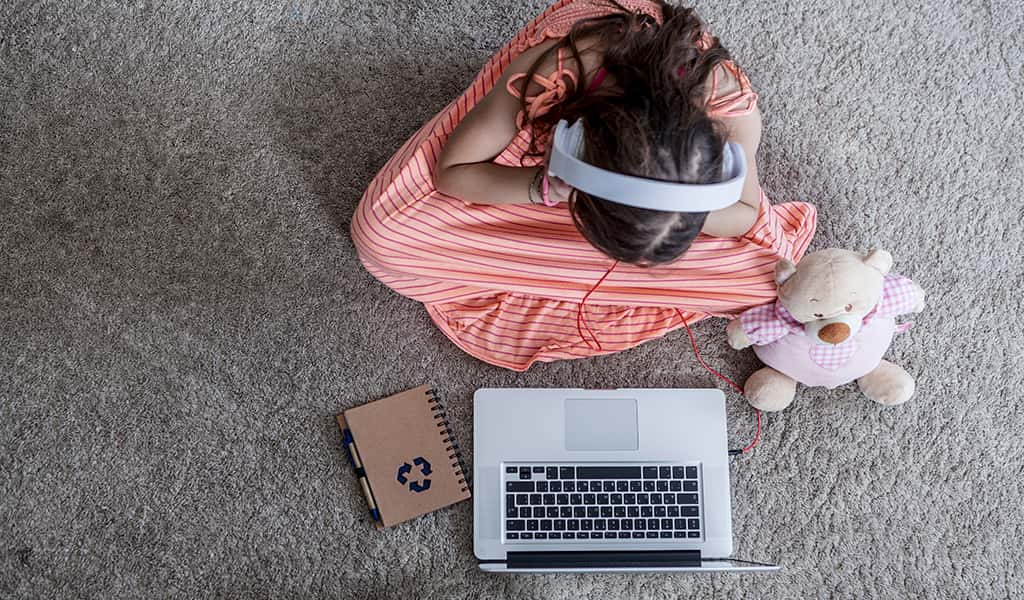
All the information you need to plan the trip to Spain you'll love
Travel Spain
Spain is a country of proud history and vibrant culture, stunning mountainous and coastline landscapes, bustling cities and hundreds of charming towns and villages.
Best known for producing some of the world’s best artists, extraordinary Islamic architecture, the Roman ruins scattered around the country and so much more, it’s no wonder Spain attracted 81.8 million tourists in 2017 (second only to France with 86.9 million), according to UNWTO, the World Tourism Organization.
If that wasn’t enough, you’ll marvel at the coastline snaking along the country’s picturesque beaches and stand in wonder in the monumental cathedrals – tributes to the Catholicism and spirituality the country’s inhabitants hold dear. Of course, there’s also the diverse nightlife, notes Lonely Planet in its comprehensive guide to everything Spain.
While Spain is another destination known for being a challenge to travel on a budget, we’ve got some tips to help you save some euros.

Geography, population and more
Spain is located in Southwestern Europe and occupies most of the Iberian Peninsula. 46.7 million people live in Europe’s third largest country, which is dotted with mountain ranges, including the Meseta Plateau that slopes down into neighbouring Portugal, the Cordillera Betica, Sierra Nevada and many more.
Along the coast, you’ll find countless bays and coves, most with sandy beaches. The Bay of Biscay is to the northwest, sporting rugged cliffs on the coastline. The Strait of Gibraltar separates Spain and Europe from Morocco (Africa).
Currency and budget
Spain uses euros (TripSavvy notes that Spain has used the euro since 2002, when it replaced the old peseta.)
As with many destinations, your costs can easily balloon if you’re travelling to popular cities like Barcelona and Madrid, but considering smaller locations like Seville, Valencia or rural communities is a good way to keep expenses in line, says travel blogger Nomadic Matt, who broke down a suggested daily budget for backpackers, mid-range and luxury travelers. While backpackers can expect to pay 50 to 60 EUR (about $76 to $91 CDN) per day for a hostel bed, cash to pick up food to cook their own meals (or having a few cheap meals out), entertainment, admission to some attractions and local transportation, a mid-range budget can run about twice that amount.
For 85 to 115 EUR a day (about $129 to $175 CDN), you could get a private room at a hostel or budget hotel, eat out frequently, take high speed trains and have enough left over for nights out, activities and even private tours.
Budget Your Trip, which publishes average travel costs for thousands of cities around the world, has budget breakdowns for trips of different time frames and expenses, including accommodation, transportation, tips and more. Young Adventuress dives deep with a budget breakdown for 30+ Spanish cities.
Tip: The easiest way to get euros in Spain is to use an ATM, which are more convenient than traveler’s checks and offer a better exchange rate than a bureau de change. Opt to be charged in euros and take out as much as you’ll need for a few days. – TripSavvy

When to go
Spain is a vibrant place to visit year-round, but if you’re hoping to keep costs down you’ll want to go during the spring (March to May) or in the fall (September to November), when you’ll encounter fewer crowds, cheaper accommodations and the best beach weather. Expect temps to fall in the 70s to 80s in the spring and in the 60s to 70s during the fall, says TripSavvy.
Where to stay
You’ve got a wide variety of choices when it comes to accommodations in Spain – enough that you can stay away from hotels, which are priced fairly steep, notes Transitions Abroad, a guide to travel, work study and living abroad with purpose. Instead, look into hostales, pensiones, and casas rurales for budget-conscious, comfy places to bunk.
Short-term apartment rentals, camping, and room renting are a few more solid budget choices. If you’re traveling with a family or in a small group, getting yourself a week-long apartment rental may be the way to go (expect to pay about €70 or about $106 CDN a night and up).
Note that some Spanish cities have confronted over-tourism by moving to drastically curb the Airbnb and homeshare listings available. Different restrictions will apply depending on which area of the city the apartments are located – the more central (such as Madrid, Valencia and Mallorca), the more rules.
Still, you can find a range of Airbnb accommodations in Spain for different locations and price ranges.
Tip: Hostales are not hostels. In Spain, hostales are like bed and breakfasts, usually small family-run establishments with shared bathrooms.

Passport and safety issues
Because Spain is a Schengen country, Canadian citizens don’t need a visa to travel here, but watch how long you stay; visa-free travel only applies to stays of up to 90 days in any 180-day period. Stays are cumulative and include visits to any Schengen country (this information can change any time, so always check with Canada’s foreign diplomatic missions and consulates).
If you’re using a regular Canadian passport, it must be valid for at least three months beyond the date you expect to leave the Schengen area. Learn more about passports and visas at travel.gc.ca.
Safety
The perennial warnings to be aware of your surroundings, keep your belongings and baggage close, lock your doors when traveling by car and to avoid unlit areas apply here. The Government of Canada cautions that petty crime such as pickpocketing and purse snatching is common, and most prevalent in larger cities during holidays, festivals and weekends, thieves are especially active in crowded public areas.
Madrid and Barcelona are high-risk cities for thieves. The Government of Canada lists a few locations specifically.
Madrid
- the Puera del Sol area and surrounding streett
- Gran Via
- Plaza Mayor, near the Prado Museum
- the Atocha train station
- Retiro Park
- the subway system
Barcelona
- the airport and on the airport shuttle bus (the Aerobus)
- on Las Ramblas (often in Internet cafes)in Plaza Cataluña, Plaza Reial and surrounding streets of the old city
- on the subway
- Barceloneta beach
- at Sagrada Familia church
- at the Sants train and bus station
Similar to many international destinations, terrorism is also a threat and targets could include public areas, tourist attractions, restaurants, shopping centres, markets, hotels, airports and other transportation hubs. Always stay aware of your surroundings and watch for warnings on the Government of Spain’s public alert system.

Flights and transportation
Flying into Spain, you’re likely to land in one of the country’s busiest airports:
- Adolfo Suárez Madrid-Barajas – Madrid
- Barcelona El Prat Airport – Barcelona
- Palma de Mallorca Airport – Palma de Mallorca
- Málaga-Costa Del Sol Airport – Málaga
- Alicante-Elche Airport – Alicante
Don’t wait to get a last-minute deal if you’re looking to save on flights – book months in advance, especially if using a budget airline, advises TripSavvy. Budget airlines may only cater to European countries, but you can still find a cheap flight to Europe and take a budget airline from there – just beware of extra costs. Flying transatlantic? Find the best prices about three months before you visit.
Madrid and Barcelona are your best options for connections as they’re both well-served by national and discount airlines, including Iberia and Air Europa. They offer daily flights to almost every corner of the country, says SmarterTravel.

Public transportation
Much like other parts of Europe, Spain has a robust public transportation network to connect its major cities throughout the country. Hop on a modern metro, use a speed rail or get yourself a multi-journey ticket.
Metros are underground railway systems and you’ll find them in major cities like Madrid, Barcelona, Bilbao, Malaga, Seville and Valencia, mentions Expatica, a site for expats around the world looking to turn their new country into their home. Ticket and pass prices vary – check Expatica’s comprehensive guide for details.
Culture Trip recommends hopping on a long-distance bus (some even come with individual televisions on the seat backs). Book in advance with companies like ALSA to get the best prices.
You can also buy a weekly travel card pass to save a significant amount of dollars. Bonus: No need to search your pockets for change when you take the metro or bus.
One of the most popular car sharing companies in Spain is BlaBlaCar – a big hit with locals and affordable. Prices for Madrid to Barcelona averaged around €30 (about 46 CDN) at the time of this writing.
Another quick and convenient option in Barcelona and other cities is to take the tram (El Tram). It’s a good idea to buy a T10 Integration ticket (€10.20) for the metro, bus and trams, which will allow you to take 10 trips on either system and can be purchased for various zones. If you’re sticking to Barcelona, get yourself a ticket for that city, or the Barcelona Card. Of course, you can also purchase a single ticket (€2.20) from ticket machines at each stop. The T10 can also be purchased at ticket machines as well as metro stations and tobacco shops (tabacs), says barcelona-tourist-guide.com.

Where to eat
The city of Seville has countless tapas bars, but there are some you should avoid for their tourist trap reputations – specifically the ones with photos of dishes pasted near the front door, or any with a large menu translated into English and other languages. Conversely, travel blogger Ben Holbrook, who writes Driftwood Journals, says he tends to go for the “dingiest, diviest looking places,” specifically recommending Bar Julio, often overlooked by tourists since it has “no menu, no sign, no English and, typically, no customer service.”
Of course, there’s no better way to live like a Spaniard than to visit a local food market, and Spain has them in droves. Madrid Food Tour recommends visiting first thing in the morning, as stalls close for lunch and asking for the best fruit of the day depending on the season.
Tip: To order at a food market stall, take a numbered ticket and order product in kilos (1 kilo = about 2.2 pounds). Be respectful – don’t touch the products or take pictures without asking, but do buy something. – Madrid Food Tour After you’re done shopping, stick around, enjoy a beer and do some people-watching.
Food Markets
As for which markets to visit specifically, The Lemon Tree has a great list of must-visit food markets in Madrid, including Mercado de San Miguel, which sells everything from fresh fruit to sangrias and homemade sweets in a historic glass building, and Mercado de Ildefonso, a hip, modern and chic foodie paradise that features and annual summer street food festival, serving the best of international cuisine.
In Santiago de Compostela, try Abastos market for the incredible seafood. Bilbao’s Mercado de la Ribera is the largest indoor market in Europe and a beautiful place to explore. Pick up fresh meats, fish cheeses and produce. See The Culture Trip’s list of the 10 best food markets in Spain.
On another day, visit Sant Antoni, a food lover’s district in Barcelona. Once home to the working class during the Industrial Revolution, it now boasts a laid-back atmosphere and an amazing range of restaurants showcasing the best of Catalan gastronomy, notes Barcelona Eat Local, a food tour travel blog.
Head to Barna Brew, a craft beer brew pub for delicious suds and dishes (note: did you know there’s a craft brewing revolution happening in Barcelona? Don’t miss out – kick back with some of the city’s best craft beers), or Ca l´Isidre, a family restaurant combining traditional Mediterranean with farm to fork cuisine. Pepa Tomate Parlament and Jonny Aldana are both great places for tapas (bonus: Jonna Aldana’s menu is vegetarian and vegan-friendly). Barcelona Eat Local has a few more solid recommendations, too.
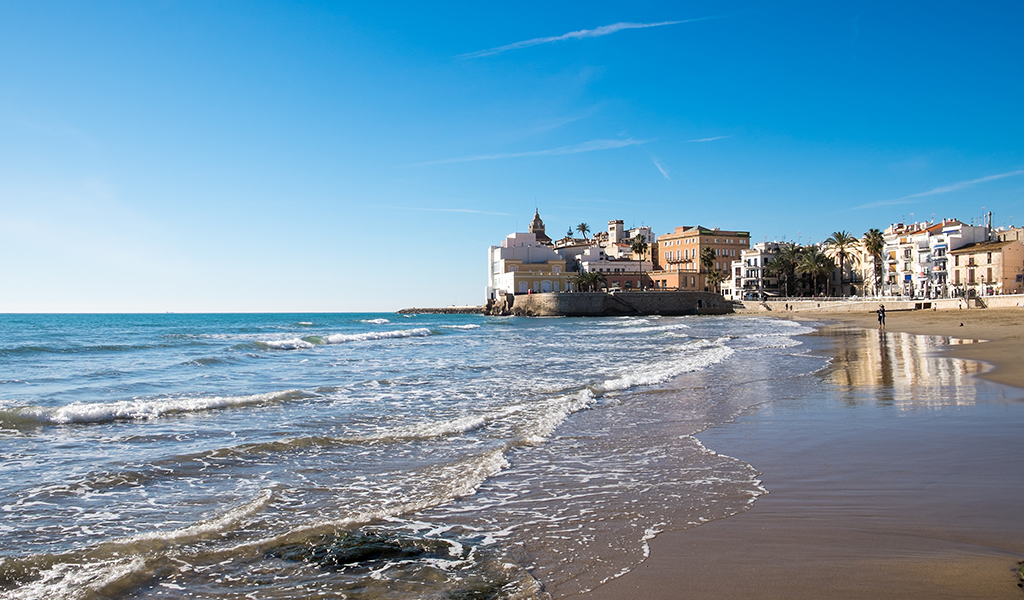
What to do
Spend a weekend in Barcelona
You really need at least a couple of days, ideally more, to discover this mecca of art, architecture and food. From Musee Picasso (the Picasso museum devoted to the famous Spanish painter) to La Sagrada Familia (a renowned an enormous cathedral) to strolling the beach at Passeig de Colom in Port Vell to take in a beautiful sunset, you’ll immerse yourself in the city’s beauty. Short Holidays and Getaways has a few fantastic ideas for how to spend a weekend in Barcelona.
Experience the San Fermín Festival and Running of the Bulls in Pamploma
Looking for an adrenaline rush? The Blonde Abroad raves about the Running of the Bulls (Encierro) during the San Fermín Festival in Spain in July. The Running of the Bulls takes place on the second day of Spain’s largest festival, which includes nine days of festivities.
That day, get to the main street early (around 7 a.m. to be safe). You can watch from a (safe!) bird’s eye view for a great first experience. The rush you’ll get lasts much longer than the run itself, which only spans four or five minutes.
See some of the best fireworks displays anywhere every night during the festival at 11 p.m., when the entire sky above the ancient Citadel of Pamploma is lit up for almost 30 minutes.
Explore Grenada
The country is famous for its ancient history and architecture and Granada is no different. Nomadic Matt notes the city is still heavily influenced by its Moorish Roots (it dates back to the Moors and Romans thousands of years ago). Here you’ll find an astounding array of museums, monuments and statues worth exploring. He also recommends taking a bike ride along the scenic countryside of the outskirts.
Don’t forget to tell us about your experience! Have you ever traveled to Spain, or are you planning to book a trip? What are your best tips when it comes to saving for vacations? We’d love to hear what you’ve planned, or any tips we’ve missed. Share your story in the comments and tell us what destinations are on your wish list. Our team love saving for holidays and we hope to inspire our members with exciting suggestions to spend your Caddle money.

Savings Goals: Team member Whitney
Ever have a bit of extra cash you’re not sure what to do with yet? Why not keep it in a favourite spot at home until you’ve spotted your next gotta-have item?
That’s exactly what Whitney Gillen, our chief marketing officer at Caddle, does with her dough that isn’t earmarked for anything specific – she has a pot where she stashes her “rainy day” fund.

“It could be used for a new pair of shoes that catch my eye, an outfit that brings me joy or a decorative item for my house. I’m also saving for home renovations (bathroom, kitchen).”
Tip: Got a dull room in your house that’s begging for some rejuvenation, but not a large budget? Perk up the space with vibrant hits of colour like green. Look for low-cost items like area rugs, art, dishes, plants and more. – Real Simple

Why we can't help but fall in love with Hungarian culture
Travel Hungary
If you’re looking for an affordable European destination packed with rich history, fascinating landmarks and delicious holes in the wall to satisfy your appetite, Hungary is it. While some European destinations are best reserved for a splurge, it’s refreshingly easy to travel Hungary on a budget.
Budapest is popular with many travel bloggers for its relaxing thermal baths, exciting culture, stunning medieval monuments and museums, but there’s also much to explore outside the capital. You’ll also have no trouble getting around the country using public transportation – similar to other European countries, Hungary has a robust transportation network.
We’ve got some tips on where to find inexpensive accommodations, food and things to do during your trip.

Geography, population and more
Hungary is located in central Europe, surrounded by Austria, Croatia, Romania, Serbia, Slovakia and Ukraine. A mostly flat country, it’s dominated by the Great Hungarian Plain east of the Danube – the major river that divides the country almost in half. Just under 10 million people live here, and the country’s largest cities by population are Budapest (the capital), Debrecen, Miskolc, Szeged, Pecs, Nyiregyhaza, Szekesfehervar, and Kecskemet.
Hungarians know their country as Magyarország, “Land of Magyars.”
Currency and budget
Residents of Hungary speak Hungarian and spend forints. Hungary is known for its affordability even to budget-savvy travelers. In fact, it nabbed seventh place on Thrifty Nomads’ 10 best budget travel destinations for 2019.
You’ll be able to eat here inexpensively, too. Thrifty Nomads estimates a simple meal will cost you $5 to $8 USD ($6.72 to $10.76 CDN), while a beer runs $1 to $2 ($1.34 to $2.69 CDN).
Budget Your Trip, which publishes average travel costs for thousands of cities around the world, has budget breakdowns for different time frames and expenses, including accommodation, transportation, tips and more. According to the site, at the cheap end of the spectrum, a couple traveling the country for two weeks could spend 229,275 Ft ($1,069 CDN), while a mid-range trip would cost them 585,132 Ft ($2,729 CDN) and a luxury vacation would run 1,507,375 Ft ($7,030) per couple for two weeks.
Several travel bloggers have written cost breakdowns for traveling Hungary – helpful reading if you’re wondering how much to budget for food, accommodations, attractions, and more. See the Savvy Backpacker’s daily costs to visit Budapest and The Culture Trip’s A budget traveler’s guide to Budapest
Tip: It’s customary to tip waitstaff 10 to 15% of your tab, while you’re safe to hand 10% to both your bartender and taxi driver. Only tip if the service charge isn’t already included, and hand it directly to the person serving you (it’s considered rude to leave a tip on the table).
Take your vacation mid or late year
Hungary continues to rank high on the list of travel recommendations, courtesy of the fantastic weather and interesting activities and events year-round. the U.S. News ranked Budapest as #2 on its Best Places to Visit in Eastern Europe list, and advises visiting between March and May and September through November.
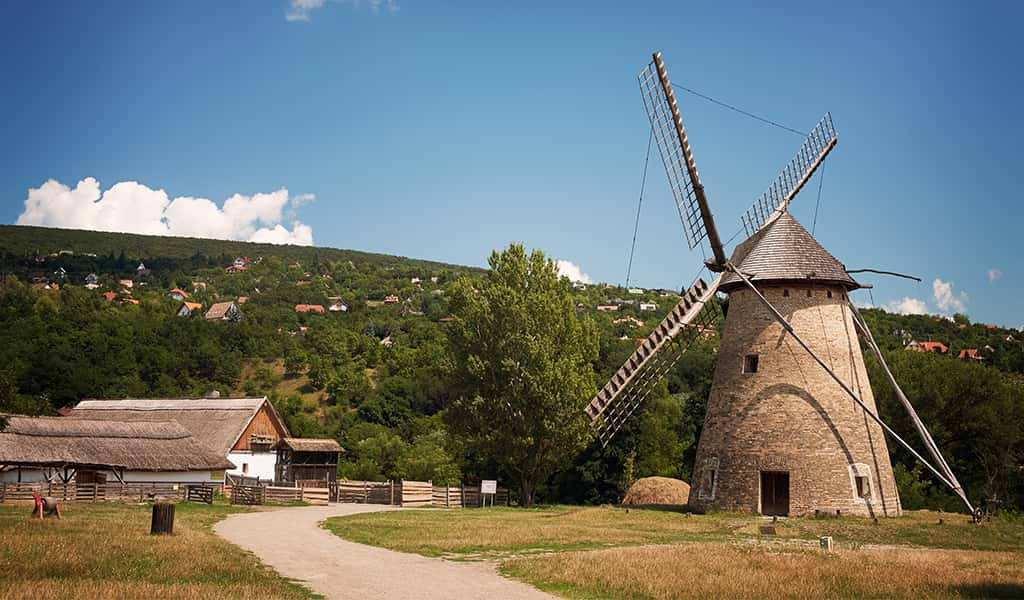
Book a dorm room, hotel or Airbnb
You’re in luck for a place to crash and save – Nomadic Matt says accommodations range from 2,500 Ft ($9 USD or $11.66 CDN) per night for a dorm room at a hostel (where free wi-fi is common, you may get a free breakfast and even be fortunate enough to have kitchen access if you want to cook your own meals), to 6,000 Ft ($22 USD or $27.98 CDN) per night at a budget hotel or 12,000 Ft ($43 USD or $55.96 CDN) per night at a three-star hotel. Outside Budapest your rates will be even cheaper.
You can try booking.com for guesthouses, hotels, apartments, homes and other unique places to stay. There’s also the old standby, Airbnb – plenty of beautiful, centrally located places are available in Budapest and throughout Hungary. Although you may pay a bit more for a bright, comfy atmosphere and more privacy – these ranged anywhere from about $50 to $100 Canadian at time of writing – it may be worth it for the experience.
Passport and safety issues
Because Hungary is a Schengen country, Canadian citizens don’t need a visa to travel here, but watch how long you stay; visa-free travel only applies to stays of up to 90 days in any 180-day period. Stays are cumulative and include visits to any Schengen country (this information can change any time, so always check with Canada’s foreign diplomatic missions and consulates).
If you’re using a regular Canadian passport, it must be valid for at least three months beyond the date you expect to leave the Schengen area. Learn more about passports and visas at Travel GC.
Safety
Take all the usual precautions you do when you travel; always be aware of your surroundings, keep your belongings and baggage close, lock your doors when traveling by car and avoid unlit areas. The Government of Canada cautions that petty crime such as pickpocketing and purse snatching occurs, particularly at markets, on public transportation and in railway stations, shopping centres and tourist areas.
Similar to many international destinations, terrorism is also a threat and targets could include public areas, tourist attractions, restaurants, shopping centres, markets, hotels, airports and other transportation hubs. Always stay aware of your surroundings.
Natural disasters and climate warnings
In addition to human hazards, it’s also important to be aware that natural disasters could lead to a sudden change in plans. Spring flooding can happen between March and May, and occurs annually in the northeast, along the watershed of the upper Tisza River. The Danube River also floods periodically in the spring. Keep these tips in mind if you’re traveling in Hungary during these times:
- be prepared to change, cut short or cancel your travel plans on short notice
- stay informed of the latest regional weather forecasts
- keep emergency contact information for your airline or tour operator
- follow local authorities’ advice and instructions
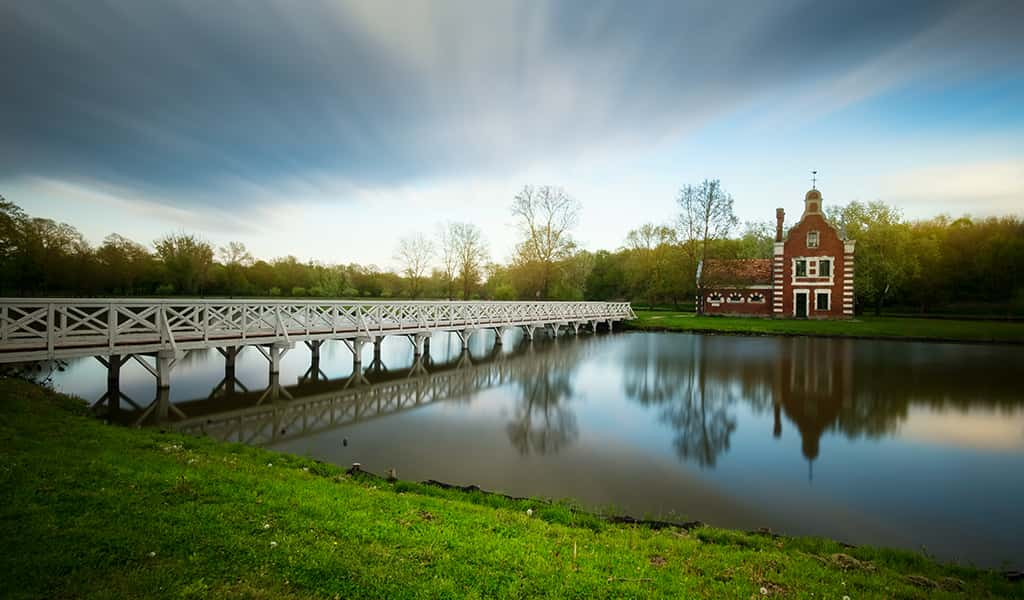
Hunt bargains online and be flexible with travel times
Flying into Hungary, you’re likely to land in one of these airports, which have direct flights from Canada, according to Skyscanner:
Never Ending Footsteps recommends visiting watching Secret Flying and Skyscanner for deals on flights, adding that because Budapest isn’t one of Europe’s major airports, deals to Hungary are more difficult to find than other popular European destinations. You’ll probably be able to catch a flight for somewhere within Europe for as little as €350 ($524.77 CDN) return, she says, adding you can then find return flights between that destination to Hungary on Skyscanner. Or, just use Skyscanner off the bat, searching for the cheapest days to fly for each month from anywhere in another country.
In short, the more flexible you’re willing to be on the time of year you travel and which airports you arrive and depart from, the more cash you can save on flights.
Public transportation
Europe is well-known for its exceptional public transportation hubs, and Hungary is no different. Once you land in Budapest (most likely at Budapest Ferenc Liszt International Airport), you can catch the 200E or 100E bus from the airport to the city and hump on a metro or tram, notes Nomadic Matt in his Backpacking Budapest Travel Guide (2019).
He says trains and buses are reliable options for getting into and out of Budapest, with direct routes available to many other European cities including Vienna, Prague, Berlin and more.
When you arrive, you’ll want to pick up a Eurail pass (for non-Europeans – Europeans get an Interrail pass) so you can take hassle-free train trips. Check on whether you’ll need to pre-book your route – an easy task (just book 24 hours in advance at a train station), say the Travelling Weasels, who took a circular route of several Hungary cities, including Budapest, Szeged, Pecs, Balaton, and Györ before returning to the capital. Their itinerary is worth reading, as they tracked their activities in detail – where they stopped, the attractions they saw, where they stayed and for how long.
A caveat: Hungary’s train network is centralized in Budapest, so for most cross-country trips you’ll need to transfer there (meaning you could travel a long way in the opposite direction of your destination to connect via the capital), mentions Travelsewhere. On the plus side, David (the self-described travel addict behind Travelsewhere) says he found the trains so good here that he never had to take a bus. And within the cities, Hungary’s extensive network includes metro, trams and buses. The southern city of Szeged is also linked by tram. Hop on a local bus to get to smaller destinations.
Fact: Budapest is home to the oldest electric underground metro on continental Europe. – Travelsewhere

Taste legendary goulash and other mouthwatering dishes
Gulyás (goulash) is one of Hungary’s most popular dishes. While almost each region has its own variety, a basic goulash is a mix of soup and stew, with beef (sometimes veal or pork), carrot, potato, spices and the typical paprika, says The Culture Trip. Find it at Budapest Bisztró, which is known for its legendary Gulyás soup. This modern venue offers a rich choice of traditional dishes, great service and atmosphere.
Fact: Goulash has a long history going back to the ninth century, but it only became a national symbol and a tool for preserving Hungarian identity in the 1800s. – The Culture Trip
If you’re hoping to eat like a local, look for étkezdes – no-frills restaurants that serve home-style dishes at low prices (keep in mind they’re closed on weekends and accept cash only).
Taking this route, you can look forward to discovering places like Budapest’s Kívánság Étkezde, a local eatery that offers classic Hungarian food like the mátrai borzaska (a fried pork cutlet coated in a potato-based breading and topped with sour cream and grated cheese (1,927.24 Ft €6 or $9 CDN)), and Belvárosi Disznótoros, a self-service eatery that offers fully prepared and to-be-prepared traditional Hungarian meat dishes like blood sausage, wild boar stew, chicken cutlets, and more, says Offbeat Budapest, restaurant and city guide featuring places both within and well beyond the main attractions. For more advice on restaurants off the beaten path, see Where to eat with the locals: The 20 best cheap restaurants in Budapest.
Eating out and eating local
Looking to pick up a few delicious finds for a home-cooked meal? Head to the Grand Market Hall in Budapest, said to be the most beautiful and largest of all Budapest market halls. Five minutes from the city centre, the market is open Monday to Saturday and you’ll find everything from fresh local fruits and vegetables to fantastic salamis, fresh fish, Hungarian paprika and Tokaj wines, to clothes, bags and souvenirs. You can even pick up home style meals or Hungarian snacks like Langos at the food stands and eateries on the upper floor.
If you’re hungry for more Hungarian dishes, your choices range from Paprikás csirke (chicken paprikash) to Túrós Csusza (cheese dumplings) and more. See Everything you need to eat and drink in Hungary

What to do
In Budapest, a myriad of activities await – even if you’re a budget-conscious traveler.
Explore Castle Hill
This kilometre-long limestone plateau contains some of Budapest’s most important medieval monuments and museums, and is a UNESCO World Heritage Site. Below it, you’ll find a 28 kilometre-long network of caves created by thermal springs. Learn more about Castle Hill
Soak in thermal baths
What’s a vacation without taking time for some well-deserved R&R? That’s just what you’ll find if you visit a thermal bath. Take the Széchenyi Thermal Baths – some of the most famous in Hungary, if not Europe, according to Two Wandering Soles. For a daily entrance fee of 5,200 Ft ($24.27 CDN) on weekdays and 5,400 Ft ($25.20 CDN) on weekends, you can take a relaxing swim under the sun in cool waters outside, or take a dip in the increasingly hotter pools inside. Jet Setting Fools recommends Lukacs Thermal Baths for a lower budget Budapest bath experience – a two-hour visit is just $10 USD ($13.34 CDN).
Venture outside Budapest
Although a lot of the travel blogs you’ll read on Hungary are all about exploring Budapest, Nomadic Matt takes a broader perspective and makes a compelling case for venturing outside the capital – there’s a lot more to the country than its capital, such as:
- the Necropolis in Pecs,
- the town of Hévíz, where you can soak in the world’s largest thermal lake an inactive, 400-metre high volcano at Gulacs Hill
- the town of Eger, known for its historic castle, stunning Baroque architecture and more
Goats on the Road recommends taking a free, self-guided tour of some of Europe’s most well-preserved historical sites. They also mentioned the Károlyi Gardens, Szabadság Square, Heroes Square, Millenáris Park and more.
You can get a taste of Hungarian history by climbing atop a horse for a riding lesson or going for a hack. The country’s equestrian traditions date back to when Hungarians rode into the Carpathian Basin on horseback and conquered central European territory, notes CNN Travel.

Don’t forget to tell us about your experience! Have you ever traveled to Hungary, or are you planning to book a trip? What are your best tips when it comes to saving for vacations? We’d love to hear what you’ve planned, or any tips we’ve missed. Share your story in the comments and tell us what destinations are on your wish list. Our team love saving for holidays and we hope to inspire our members with exciting suggestions to spend your Caddle money.
8 Side Hustle ideas you can start today
Do you ever crave something “extra” besides your 9-to-5 gig? Maybe your full-time job pays the bills, but you wonder what else is out there…what could you be doing to pursue your passions and put a little extra cash in your pocket every month? That’s where side hustles come in. And luckily, they’re easier than ever to start today. You just need some ideas and a plan to begin.
First, let’s define what a side hustle is:
According to Wonolo, a platform where businesses connect with workers in labour-based roles such as retail, manufacturing and shipping, “A side hustle is any type of employment undertaken in addition to one’s full-time job. A side hustle is generally freelance or piecework in nature, providing a supplemental income. Side hustles are often things a person is passionate about, rather than a typical day job worked in order to make ends meet.”

8 side hustle ideas
Here are 8 side hustle ideas to get you thinking about your own:
Teach a course or tutor students online
Online courses are all the rage nowadays for both students, tutors and business owners, and for good reason: you can choose the hours and subjects you teach, and you and your students aren’t confined to a classroom (in fact, they can be almost anywhere in the world as long as they have a reliable Internet connection).
If you meet the requirements, you can also teach English as a Second Language (ESL). There are a few reputable companies who hire teachers from North America to tutor kids online. Learn more about how you can make money as an online tutor.
House sit for free rent
If you dream of traveling the world but aren’t sure how to finance your adventures, house sitting might be a great option. As a house sitter, you’ll live rent-free (by mutual agreement) in return for taking on responsibilities such as pet care, general maintenance duties and making sure everything runs smoothly day-to-day.
As you might imagine, this requires you to be a reliable and trustworthy person, with access to people who can recommend you. You’ll also need a detailed agreement with each of your clients. Read our article on how to get free rent house sitting for more details.
Explore your talent for amateur photography
Enjoy taking photos everywhere you go? You can turn that passion into a solid side gig you’re willing to put some work into your craft (and invest in a decent DSLR camera). Although you likely won’t make a lot starting out, you can begin to hone your photography skills and learn the ins and outs of selling stock photography online. Learn more about how to get set up as an amateur photographer.

Start a freelance business
Every business needs to market to potential customers, and you can help them! If you’re a fantastic writer, have an eye for design, love to write code, or something else, why not take on some side jobs in addition to your full-time position? This way, you can build a base of clients who bring you a steady influx of cash, and grow your business into a sustainable career working for yourself, if that’s your goal.
Ryan Robinson, a writer and part-time blogger, grew his venture to earn $160,000 in a year while working a full-time job. You can do it, too. Read his tips on how to start a freelance business while working full-time and our post on how to make money as a freelancer.
Build your career as an affiliate marketer
As an affiliate marketer, you’ll make money promoting other people’s products and earn a commission if people buy thanks to your telling them about a product. If you love writing product reviews and you have a favourite niche such as tech, beauty, baby products or something else, affiliate marketing may be for you. Neil Patel has a comprehensive step-by-step guide to affiliate marketing.
Become a dog walker
Would you spend all day with furry, four-legged friends if you could? As a dog walker, you get to walk adorable pooches around the neighbourhood, the owner receives peace of mind knowing that their pet is cared for, and the pup gets their regular outing. If you’ve got a flexible schedule, aren’t squeamish about cleaning up after a dog, and know which breeds of dog you can handle, why not? Jen Fromal is a guest blogger and dog walker who wrote a great post for Budgets are Sexy about how to make dog walking your side hustle.
Bonus
These ideas are in a different category, as they depend on having access to specific online platforms to promote yourself (or in the first example, your space). You may want to think about the pros and cons of doing so.

List your Airbnb space
Creative entrepreneurs and resourceful 9-to-5ers are catching on to this trend, no hospitality management or industry experienced required. With minimal upfront investment, you can transform your empty room into a money maker, and meet all types of people in the process. Learn how to make more money with your Airbnb listing.
Earn money driving your car
You can earn extra cash by transporting people, equipment and food around town while making others’ lives easier. By joining a ride-sharing platform like Lyft or Uber, you can make more dough during peak times and set your own hours. And since your car is your office, you’ll also meet all types of people! Learn more about how to earn money driving your car.
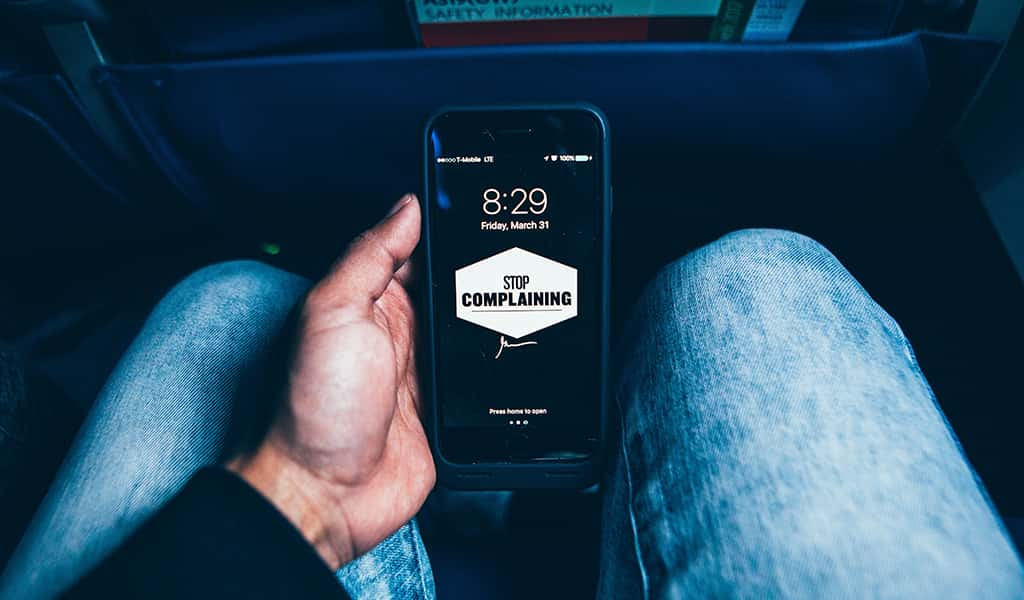
Wrapping up
If you’ve been thinking about starting a side hustle for a while, now is a great time! Once you take inventory of your passions, skills and availability, make a list of potential side hustles that fit within those parameters and see which appeals to you the most. Then, get to work while learning everything you can about your chosen field. In no time, you can be using your rewarding new pursuit to save up for that big trip, help pay the bills or contribute to your investments.
